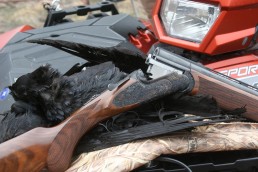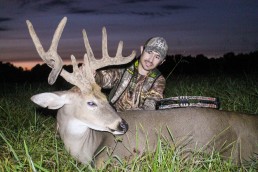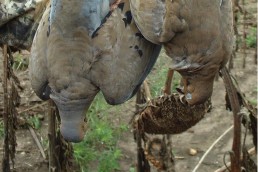Advancing the 28-Gauge
SHARE THIS POST
From day one as a hunter, clay target shooter, and a student of ballistics science, the 28-gauge has been the weak link in my background. Save for shooting the gauge after arriving in South Dakota some 25 years ago, the first half of my gunning days were spent with a variety of 10-, 12-, and 20-gauge shotguns, with the 410-bore thrown into the mix every now and again for squirrel hunting or rat shoots in the local dump.
Why, then, am I taking on the 28-gauge as a subject reference? With current-day developments in new materials, components, and even propellants, sub-gauge offerings like the 28-gauge are making major strides in the area of much-improved downrange ballistics.
Despite my limited time behind a 28-gauge, but shooting my sweet-pointing Franchi stack barrel mounting a 23-inch pipe measured from the chamber throat, getting into Dakota dove seasons over the past decade or so has made me a believer in the sub-gauge offering. While 28-gauge ammunition is stacked in piles at the doors of sporting goods stores in states like Kansas and Texas, for the most part until lately, limited numbers of this gauge offering have been available here in the Dakotas. The game changer in this acceptance of the sweet lightweight 28 could be just around the corner, based on what I have been observing in our major sporting goods outlets here in western South Dakota.
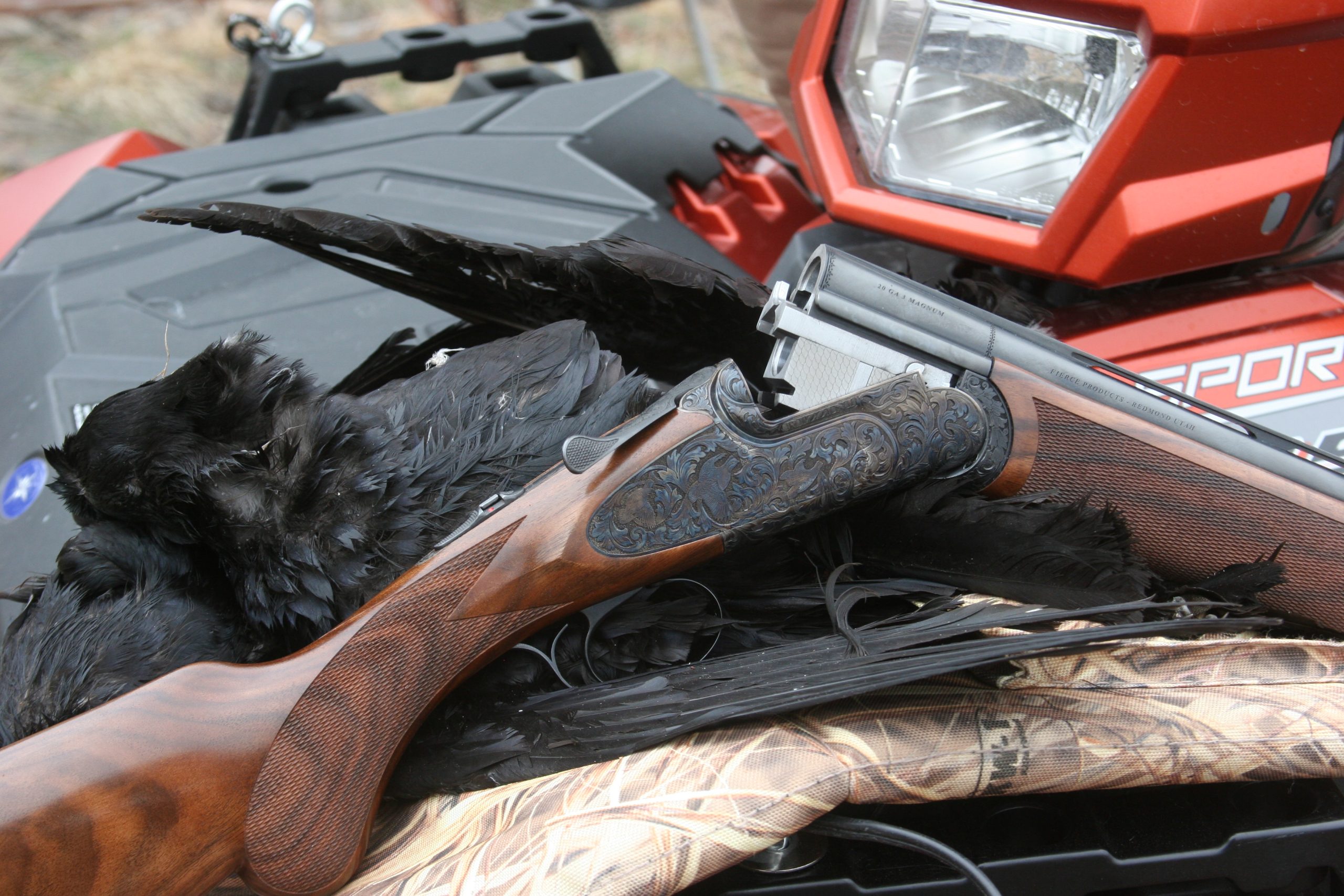
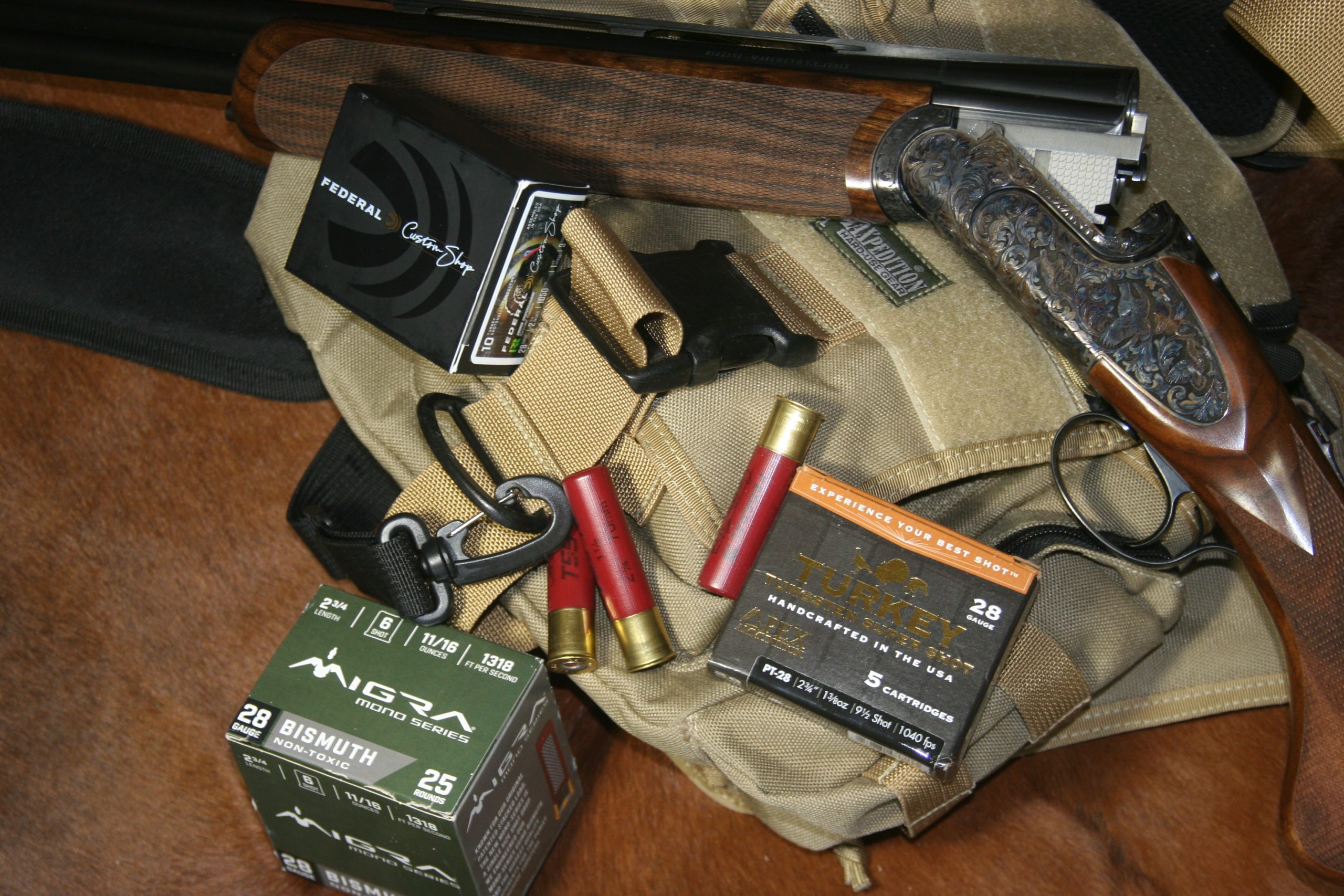
This spring I was offered the chance to run some hands-on testing of a Rizzini 28-gauge in their field model over-and-under. Why is this different as applied to the 28-gauge, with so many options available to the researcher? Rizzini sent not just the 28-gauge but two additional complete sets of fore-ends (matching) and barrel sets in 20-gauge and 410-bore as well. This flexible set of shotguns using a single receiver made for a nice setup when getting a feel for the 28-gauge against larger and smaller bore systems.
Also in the same vain, Benelli sent an outstanding 2025 SBE 28-gauge for testing. Coupled with my previously mentioned Franchi o/u, and the later addition of a TriStar side-by-side with an English stock design, you could say that I was far more than road ready to learn something about the 28-gauge, judging by this stable of four test-gunning systems.
With this review written in late spring, warm targets were somewhat limited. However, using my TriStar side-by-side on winter rabbits for three seasons, the stack barrel Franchi on numerous dove forays, and the Rizzini against spring crows being a season that had just closed, I did have some background shooting the sub-gauge offering. I retained enough gunning time to enable me to bring together a pile of effective assessment regarding the gauge offering, regardless of gun brand or type.
Why all this recent attention to sub-gauge shotguns? Modern munitions design has raised the bar in performance. In effect, the 28-gauge shotshell today retains the old performance of the 3-inch, 20-gauge which says the shooter can make use of a much lighter weight and faster-handling shotgun while retaining very effective knockdown power.
Load development regarding the 28-gauge has centered around two shot types. First, Bismuth shot has come front and center, currently offered by several ammunition brands. Second, the use of heavy-metal shot like Hevi Shot and .18 density tungsten move the gauge well up on the performance scale.
In terms of this review, I centered my attention on loads offered by MIGRA, and their 11/16 oz., 1310 fps muzzle velocity Bismuth shot #6 loads, as well as Ballistics product Heavy Shot and TS .18 Super Max #9 shot. In the advanced load department, Federal cartridge owns the whole deal. Federal offered two different loads for testing, with the first being a Hevi Shot Magnum Blend of tungsten and iron shot in stacked 5,6, and #7 shot sizes. Payload weight stood at 1 ounce, with a 1300 fps muzzle velocity.
Also, Federal sent very high-end, custom shop loads consisting of .18 pure tungsten shot in a #9 pellet, which puts the 28-gauge and its 1-ounce load in a deadly gobbler killer class to 60-plus yards. Yes, I had previously shot several good toms at ranges well beyond 60 yards with 1-ounce loads in a 12-gauge. With Benelli sending the SBE Super Black Eagle in 28-gauge and mounting extended choke tubes in mod and IC, I was not at all concerned with muzzle damage as in using flush-mounted, standard choke tubes when test firing the TSS based loads, Federal or otherwise. Tack on an additional new load by APEX in 28-gauge consisting of a 1 3/8 oz. payload of 9.5 .18 density pure tungsten, and it was showtime around the old pattern /velocity check station on my home place pattern range.
Being that TSS carries twice the density of lead shot, it is hands-down the winner when it comes to generated kinetic energy per pellet downrange by the 28-gauge shotgun. The TSS payload in any shot size is a game changer across the board, and in effect makes shotgunning turn toward a whole new status in weapons systems.
With almost a decade behind me in TSS research, this stuff is not at all new to some ballistics buffs and hard-nosed, long-range shooters. Because TSS is such a game changer sub-gauge, options like the 28 are vastly upgraded toward something like a 20-gauge, 3-inch magnum. Now, take the new hot shot 28-gauge loads and run them in the field against ringnecks, ducks over decoys, and even some controlled (known range) pass-shooting situations, and be ready to have your mind expanded like never before. The lightweight, 28-gauge gun is a dream to shoulder, and becomes a blazer of a ballistics package that will reach out well beyond most old-school, larger gauge offering.
Rest assured that when you get a handle on the raw element TSS as a shotshell projectile, and realize its down-range raw performance numbers, all bets are off in terms of its ability to drop even geese and trophy class gobblers, previously owned by much larger guns and loads.
At this point, I need to address the ultra-high cost of TSS ammunition as observed over sporting goods store counters. Yes, pricing is nuts regarding factory loads in several band names. Five rounds in 28-gauge TSS can cost you as much as $75 for a five-pack of shotshells. However, be advised that there is a light at the end of the ballistic tunnel. As of May 13, 2025, two additional brands entered the TSS market. Ballistics Product in Minnesota is offering shooters the ability to handload TSS at less than half the market pricing, and brands across the pond are taking a hard look at entering the TSS shotshell ammunition game as well. In other word, this TSS development game is not even at halftime yet. As such, sub-gauge guns are getting a total face lift in terms of terminal or at target ballistic performance.
Currently, if any problem exists in this market, as in feeding new hot ammo into the 28-gauge guns, it is that most raw tungsten as well as even basic steel shot comes from China. This situation could pose problem in terms of gaining access to TSS raw shot in terms of availability. And as the price per pound increases, finished shotshells over the counter continue to take a price hit. As such, MIGRA, APEX Ammunition, Backridge Ammunition, as well as Federal are, for the time being, still looking, moving up the performance ladder in sub-gauge offerings.
Performance Profile 28-Gauge Test guns: Rizzini O/U Field • TriStar S/S Field Grade • Franchi O/U Field • Benelli SBE
While some loads in current production tend to talk the talk, seeing what loads can actually walk the walk is always an interesting event on the pattern range, and in the field on warm targets. I hit the nail on the head in terms of timing being the availability of test shotguns noted above when I took on the 28-gauge project. As such, testing started in mid-May 2025, and was extended well into late June, with a major part of the shooting industry backing up this project. Of special note is the inclusion of the Benelli SBE in 28-gauge. Sleek, very fast handling, and making use of special steel-shot-safe extended chokes was a game changer, in that several of my test guns were seeing little or none when it came to shooing TSS through their almost priceless barrels.
I would suggest that when using TSS, you shoot shotguns that can receive a replacement barrel if necessary, or set at a price point whereas the shotgun could be easily replaced. I know this is a sensitive subject, but TSS shot, if loose outside the protective wad, could raise cane with both chokes and bore surfaces.
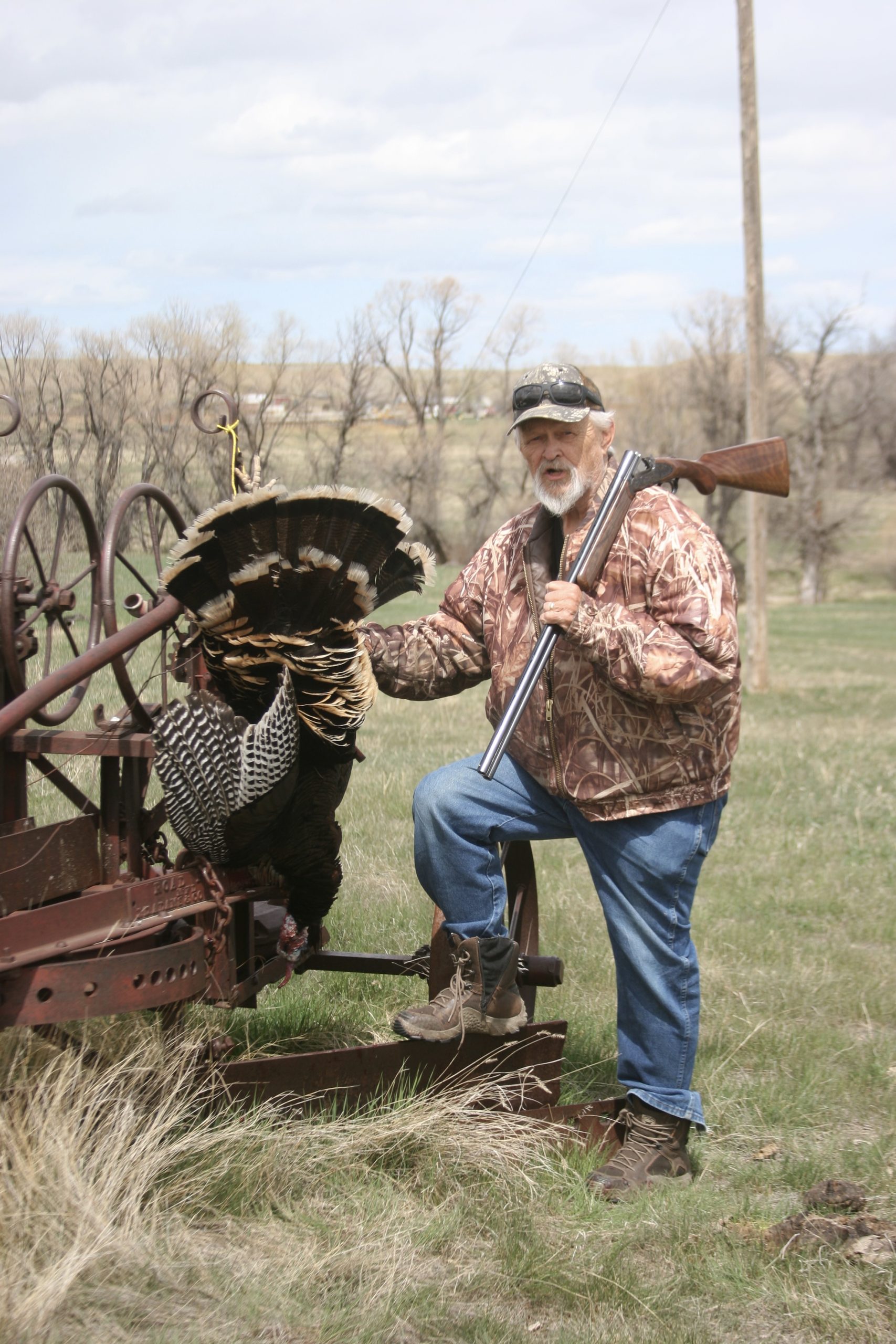
Pattern Board 28-Gauge
Gun /choke Load Range – Pattern 3 Rounds
Rizzini O/U Full MIGRA 2 3/4” 11/16 oz #6 Bismuth 40 yds – 81%
Rizzini O/U Mod Ballistics Products TSS .18 1 oz #9 40 yds – 72%
Rizzini O/U Mod Ballistics Products TSS .18 1 oz #9 50 yds – 68%
Franchi O/U Full MIGRA 2 3/4” 11/16 oz #6 Bismuth 50 yds – 64%
TriStar S/S Full MIGRA 2 3/4” 11/16 oz #6 Bismuth 40 yds – 84%
Benelli SBE Extended Mod APEX Turkey 2 3/4” 1 3/8 oz TSS #9 50 yds – 54%
Benelli SBE Extended Mod Federal Custom Shop .18 1 oz TSS #9 50 yds – 60%
Are you enjoying this post?
You can be among the first to get the latest info on where to go, what to use and how to use it!
Benelli SBE Extended Mod Hevi Shot Mag Blend #5,6,7 TSS Iron 50 yds – 72%
Benelli SBE Extended Mod Federal Custom Shop .18 1 oz TSS #9 60 yds – 58%
Range: 40 yards
Comparative terminal velocity: #9 lead vs. #9 TSS 1-ounce black lead shot
Lead terminal velocity: 40 yards, 567 fps, kinetic energy .54 ft/lbs.
TSS terminal velocity: 40 yards, 701 fps, kinetic energy 1.3 ft lbs.
The following is data taken from a small sample and some assumptions.
Chronograph data is difficult due to the polished nature of the shot.
SHOT data, 11-13-2020
DESCRIPTION: “TSS” #9
STANDARD METRO
Pellet Weight (GRS): 1.200 Effective SD: 0.0273
Pellet Diameter, INS.: 0.07924 average
Range Velocity Energy TOF Drop Wind Def 45mph Lead
Yards Feet/Sec Foot-Lbs Sec Ins In/10mph Feet
0 1220 4.0 0.0000 0.0 0.0 0
10 1028 2.8 0.0279 0.1 0.2 1.8
20 889 2.1 0.0595 0.6 1.4 3.9
30 783 1.6 0.0957 1.5 3.4 6.3
40 701 1.3 0.1364 3.0 6.1 9.0
50 630 1.1 0.1817 5.2 9.9 12.0
60 567 0.9 0.2321 8.3 15.0 15.3
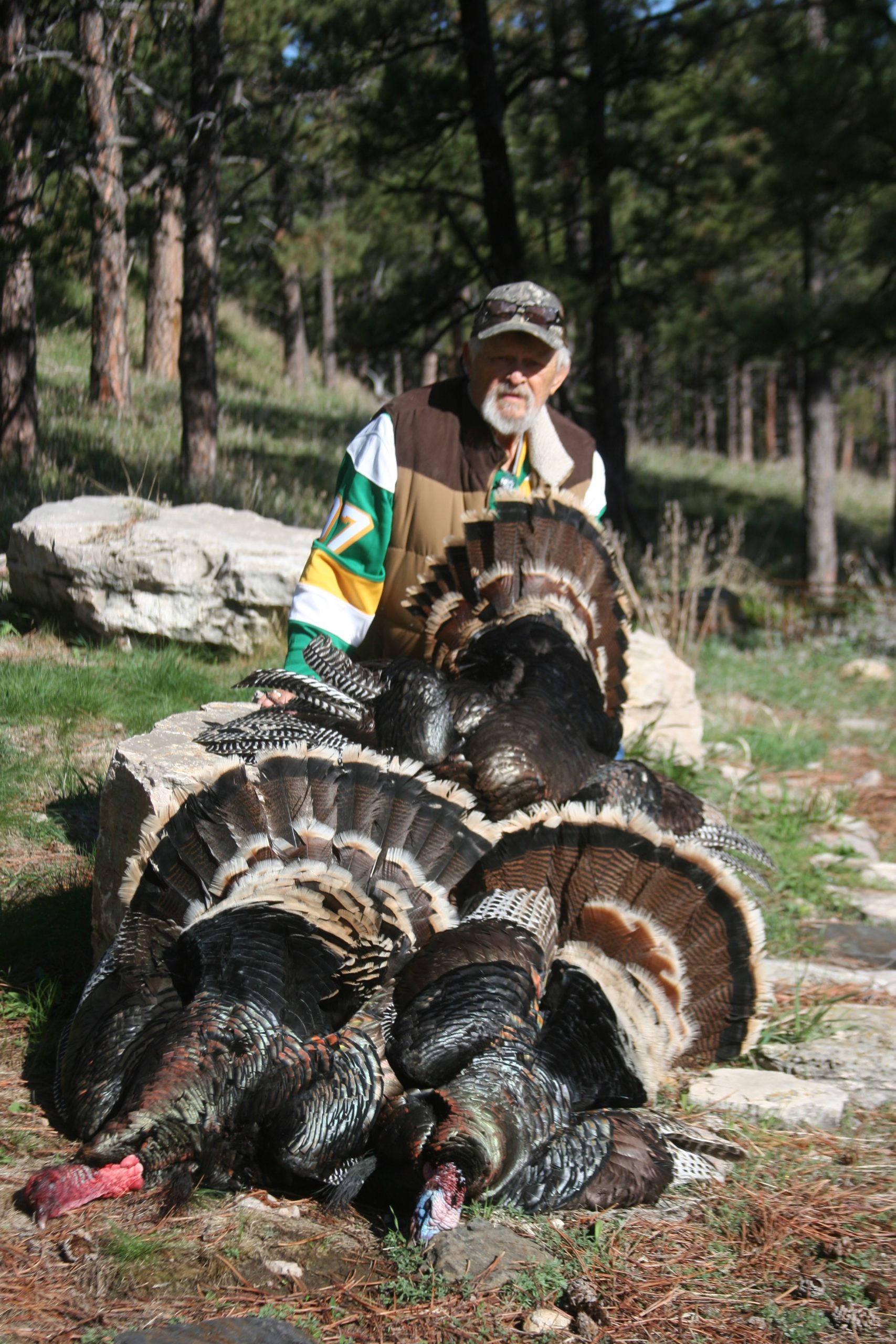
Viewing the complete table regarding #9 TSS shot, the working range based on velocity and energy is 60 yards. 600 fps is required for complete penetration head neck turkey target for a cleanly retrieved game bird. The working range of lead #9 is just under 40 yards, based on energy and pellet speed.
Shooting one ounce of #9 TSS in a 12-gauge or 28-gauge will produce the same results at any given working range limit. This is the new age of shotgunning by way of advanced ammunition and even payload sending systems (chokes).
As a final note to this material, turning to sub-gauge shotguns as in the 28-gauge can make for an extended level of shooting time for target as well as hunters advancing in years. Carry weight is cut in half, and speed mounting the shotgun is also kept at a sustainable level, even increased in some cases. During live-fire testing, I found handling to be an observed condition that was very different from heavy-bore shotguns. Small game target acquisition was easy on running targets, and even larger bird hunting as in pheasants over dogs was very workable.
I would not suggest the 28-gauge as a pass shooting gun blocking the ends of corn fields, or pass shooting waterfowl, but the gauge offering is very workable under a wide range of field application. This is not conjecture on my part, but information developed from real-time, hands-on field testing. In the event you’re sick of hauling around seven to nine pounds of steel afield, or in the five-stand sporting clays cage, trying out a 28-gauge in real time could be just what you’re searching for.
MWO
SHARE THIS POST
Did you enjoy this post?
You can be among the first to get the latest info on where to go, what to use and how to use it!
L.P. Brezny
Writing on outdoor subjects for over 40 years, L.P. Brezny has written four books on shotgun and rifle (ballistics and performance). He’s an expert at smoothbore, and high-power, ultra-long-range shooting. He’s a specialist, producing reviews covering general products used in the outdoors industry.
